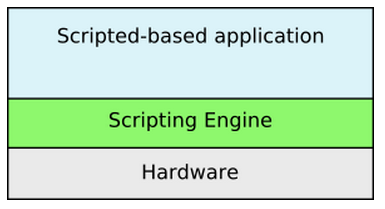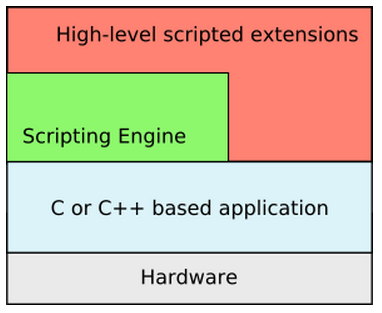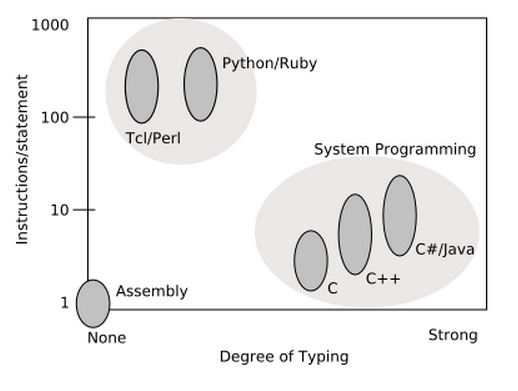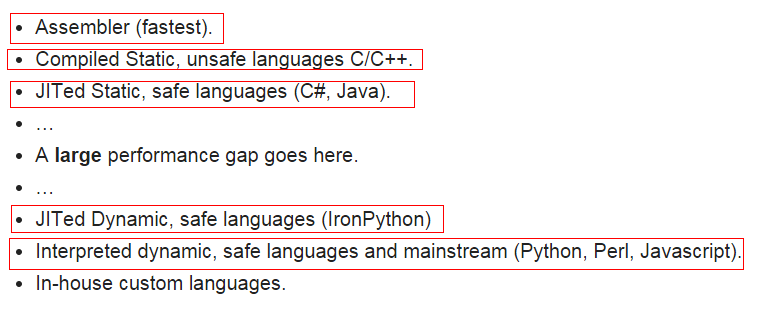【高级语言与低级语言】
本文记录Mono如何让你工作更高效,以及如何让软件在无需把C/C++重写成C#代码的情况下拥有扩展性。
In the past, software used to be written entirely in a single programming language. Developers had to strike a balance between high performance and having to pick a low-level language or slower execution speed but using a high level language.
过去,软件通常被写用一种语言来编写。开发者不得不在高级语言(开发高效)及低级语言(运行高效)间选择。
C/C++程序通常如下面左图,脚本语言程序通常如下面右图:


Picking one or the other is a difficult choice as there are many nuances that software developers face.
选择哪一种语言很困难,因为有非常多的小细节。
The engine of the application is developed in C or C++ and usually maintained and developed by the veteran members of a team, while pieces of the UI, dialogs, interaction, or non-performance critical routines are written in a higher-level scripting language.
一种解决方案是,引擎由专门的产商用高性能的C/C++开发。非性能关键部分如UI、交互可由script开发。结果会是像下面这样。

A comparison of various programming languages based on their level (higher level languages execute more machine instructions for each language statement) and their degree of typing. System programming languages like C tend to be strongly typed and medium level (5-10 instructions/statement). Scripting languages like Tcl tend to be weakly typed and very high-level (100-1000 instructions per statement).

程序语言由低到高总共分为5级,如下:

参考:http://www.mono-project.com/docs/advanced/embedding/scripting/